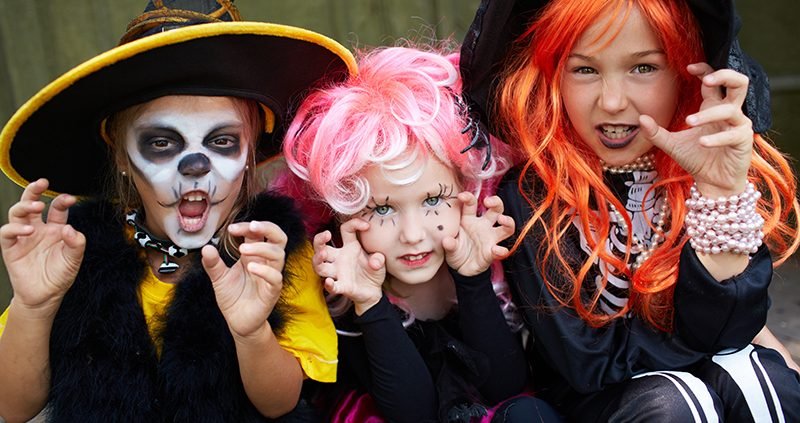Preventing Head Lice this Halloween
Imagine creepy, blood-sucking critters invading your home this Halloween. No, it’s not some scary movie plot. It’s head lice, and lice treatment centers around the country report seeing a spike in cases this time of year. Here are some professional tips on preventing head lice in your household this Halloween.
How Are Lice Spread?
Lice are almost always spread among children through head-to-head contact like when sharing a bed or playing in close proximity.
Contrary to popular belief, lice are not typically spread by sharing items. Head lice must feed on human blood in order to survive. An adult head louse will die within 24 to 48 hours of being off a human head, and nymphs can only live for several hours without feeding. Nits must be kept warm by the scalp, and are therefore not viable when off of a human head.
For all of these reasons, it is not very likely that lice will spread by way of inanimate objects. However, it is not impossible, and therefore basic cleaning of costumes, wigs, bedding, carpets, upholstered furniture, hairbrushes, stuffed animals, hair ties, and clothing should be done whenever head lice are found in the home.
Keeping Costumes Critter-Free
During Halloween, lice can spread as kids try on different costumes at stores and at friends’ houses. When you bring home a new or borrowed costume, try these methods to reduce the chance of spreading head lice:
- Put costumes in a sealed bag for 48 hours before you wear them. Lice can’t survive longer than this without blood from the human scalp.
- Alternatively, place new or borrowed costumes in a hot dryer for at least 45 minutes before they are worn. High heat for an extended period of time can kill head lice. Be sure to check the labels first to avoid damaging your costume.
Fright-Free Wigs
Halloween costumes with wigs, hats, masks, and headbands are all popular among children. Here are some ways of preventing head lice from spreading with these items.
- Encourage your kids not to share items that are worn directly on the head such as wigs, hats, and headbands.
- When purchasing items for the head that are not in a sealed package, avoid trying them on right away. Place them in a sealed bag for 48 hours, as suggested above.
Always Check for Creepy Crawlers
Another step in preventing head lice is doing frequent head checks. Check your child thoroughly for head lice if they’ve shared a costume or have gone to a sleepover. Here’s how to do it:
- Start checking your child’s scalp by parting the hair in multiple places. Look especially closely at the nape of the neck and behind the ears.
- Check for any movement in the hair, especially when shining a light on it.
- Look for lice and their nits. Lice are the size of sesame seeds and white to grayish in color. Nits are tiny and hard to spot. They are white or beige in color and feel like a grain of sand.
- If you can’t tell if it’s lice or dandruff, the biggest difference is that dandruff will easily brush off. Nits are glued to the hair shaft and harder to remove.
Steer Clear of Terrifying Treatments
If you do detect head lice on your child, step away from dangerous over the counter remedies. These pesticide-style treatments are not only proven to be highly toxic, but they have an extremely low efficacy rating. The active ingredients in many of these products are lindane and permethrin—both scientifically shown to be carcinogenic.
Treatment That’s a Treat
Instead of treating your child with tricky pesticides, visit Fresh Heads. We’re proud to offer strictly chemical-free treatments. Our signature AirAllé treatment is FDA-cleared and has one of the highest efficiency ratings of any lice treatment out there. It brilliantly utilizes heated air to dehydrate and kill lice and their eggs. The treatment can be completed in about an hour, so your kids can get back to having Halloween fun ASAP.


 With Halloween right around the corner and little ones enjoying dressing up in costume, masks and wigs and such, we thought it the opportune time to remind our readers how lice are spread and some tips for preventing lice transmission so your kids can enjoy this fun time of year lice free.
With Halloween right around the corner and little ones enjoying dressing up in costume, masks and wigs and such, we thought it the opportune time to remind our readers how lice are spread and some tips for preventing lice transmission so your kids can enjoy this fun time of year lice free.



